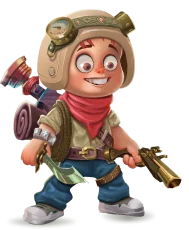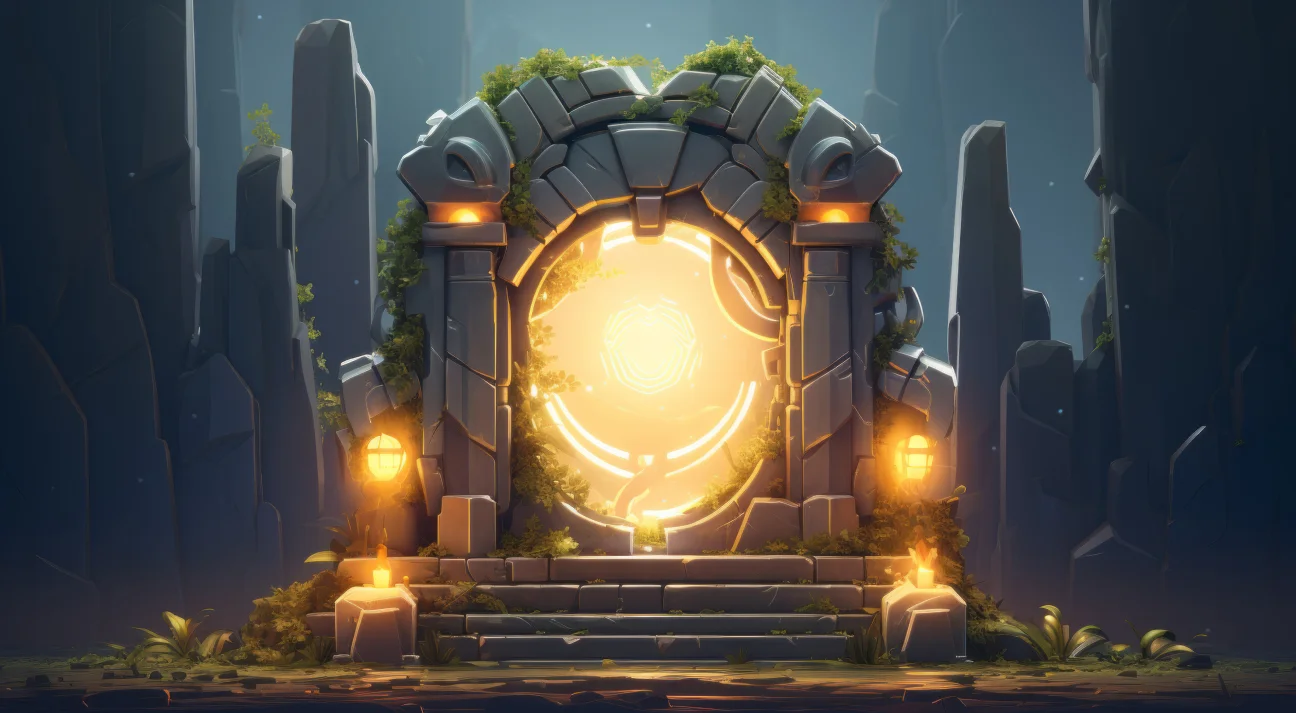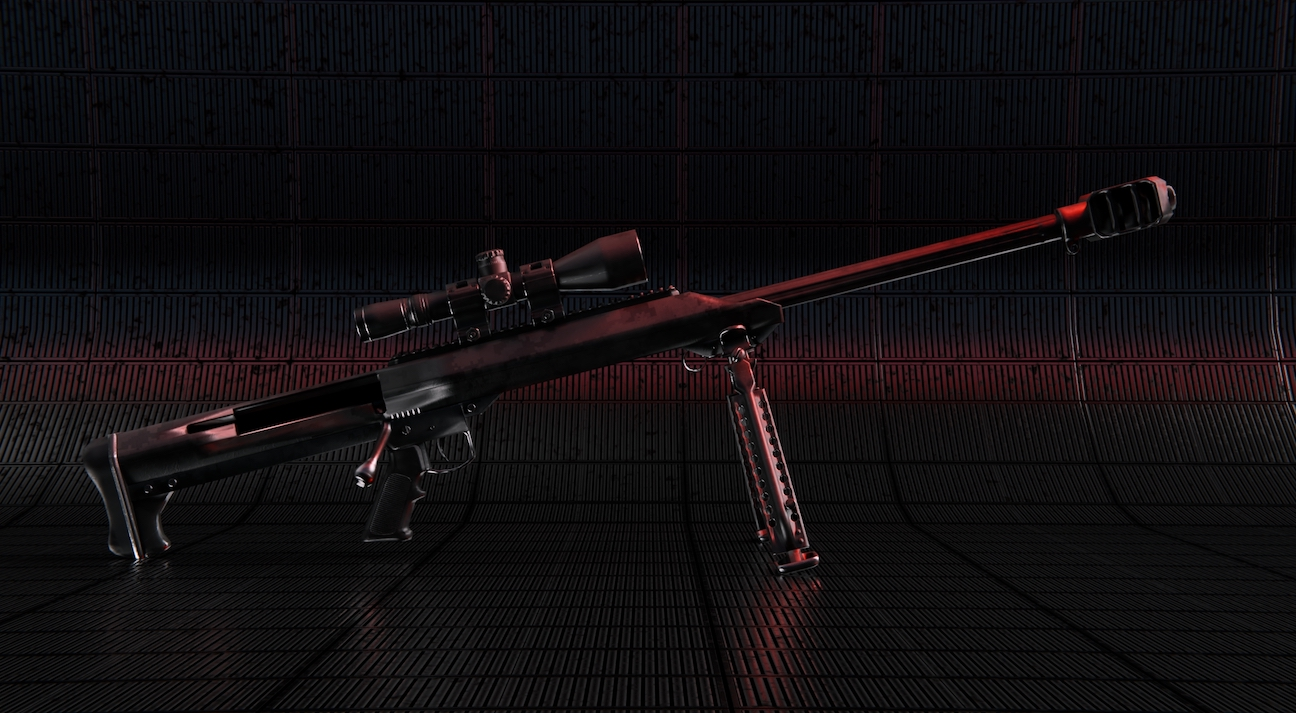
How to Design Iconic Video Game Weapons and Equipment?
Do you often think about the video game weapons and equipment that look super cool on your favorite video game characters? Have you ever wondered what goes into making those epic swords, guns, futuristic gadgets, and other magical items that make gaming adventurous and unforgettable?
Well, there is a backstory behind designing these video game weapons and equipment. In this blog, we are going to discuss the designing process and tell you what goes into the minds of artists while making these weapons. We will cover the entire process from the first doodles on paper to the final models.
Role of Weapons and Their Impact on the Gameplay
Weapons are the main tools that help players engage in combat within the game. Their design, range, firing rate, and damage output significantly influence the dynamics of encounters. Different weapons cater to various playstyles, such as long-range precision, close-quarters brawling, or supportive roles.
Players may opt for stealth with silenced weapons, go all-out with heavy artillery, or prioritize accuracy with sniper rifles. In certain games, weapons play a role in puzzle-solving elements. A weapon with a unique ability or function may be necessary to unlock new areas, defeat specific enemies, or manipulate objects within the game world.
The examples below might help you understand the connection better.
1. Energy Sword (Halo Series)
The protagonist of the Halo Series, Master Chief, comes across a Covenant’s Energy Sword that is associated with warriors, the Elites. The presence of an Energy Sword in the hands of an Elite serves as a visual cue and indicates a face-off against the challenging opponent.
When players wield the Energy Sword, it changes the gameplay dynamics and becomes a one-hit-kill melee weapon, leading to an aggressive and close-quarter combat style.
2. Blades of Chaos (God of War Series)
In the God of War series, protagonist Kratos wields the Blades of Chaos, which are chained weapons that represent the physical manifestation of his tragic past and connection to the gods.
These versatile weapons excel in close-quarters combat and ranged attacks, allowing players to execute a variety of moves, delivering devastating strikes to enemies.
3. Super Shotgun (Doom Series)
In the Doom Series, the Super Shotgun is a staple weapon known for serious and high-damaging close-range attacks. It allows players to make tactical decisions and get personal with enemies. Its limited range and ammo capacity introduce strategic considerations for players.
Knowing when to switch to the Super Shotgun, conserve its limited ammunition, or opt for other weapons adds a strategic layer to combat scenarios.
4. Signature Weapons (Overwatch)
Each hero in Overwatch has a unique weapon that aligns with their role and abilities. For example, Widowmaker’s sniper rifle complements her role as a long-range sniper, and Tracer’s dual pistols suit her agile and time-manipulating playstyle.
The signature weapons of different heroes have unique strengths and weaknesses. Moreover, the precision required for aiming, understanding damage falloff, and managing ammunition are also different and demand individual skill within the game.
Step-by-Step Process of Design Weapons for Games
Video game weapon design is a multifaceted process that involves creativity, technical expertise, and a deep understanding of gameplay mechanics. Here’s a step-by-step guide to the process:
1. Idea and Conceptualization
This step is all about brainstorming, research, ideation, creative exploration, and defining an overarching vision of weapons. Start the process by understanding broader goals. For example:
- What is the game’s genre?
- What role will weapons play in the gameplay?
- How will your character interact with weapons?
- What are the core design objectives and weapon type?
Find the answers to these questions and align the design with the game vision. Choose whether it’s a fantasy world, combat game environment, high-tech sci-fi theme, or a historical setting, and proceed according to overall aesthetics and atmosphere.
2. Weapon Sketching and Visual Development
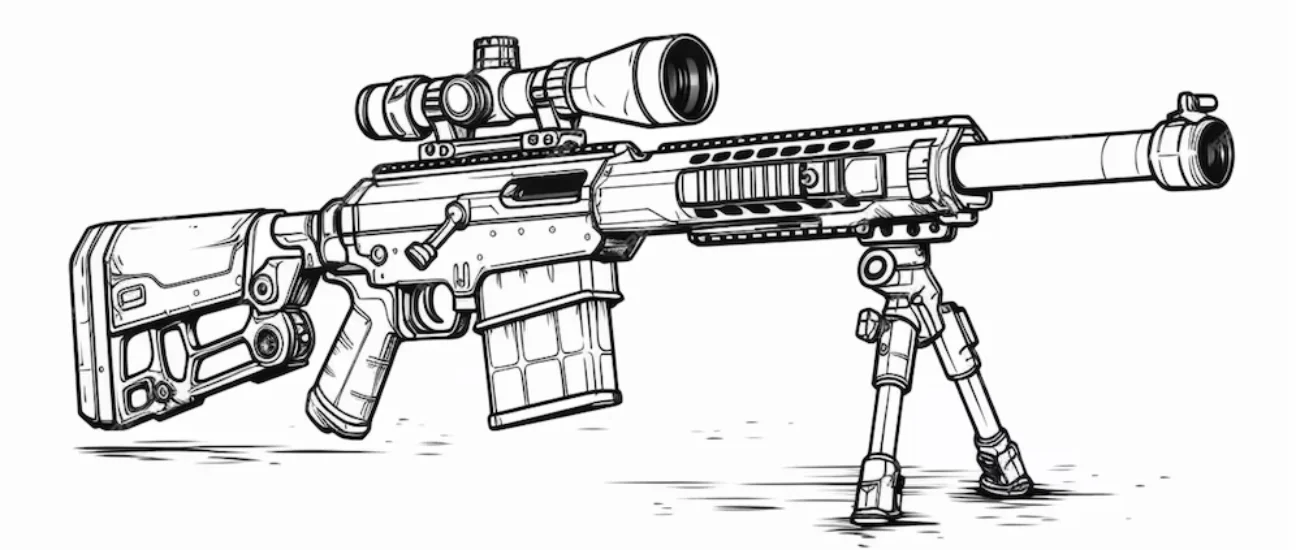
Draw thumbnail sketches and experiment with shapes, proportions, and details on a smaller scale. Create multiple variations and explore different aesthetics, color schemes, and additional features. If you plan to add dynamic animations, consider how the weapon will move and behave during different actions.
3. 3D Modelling
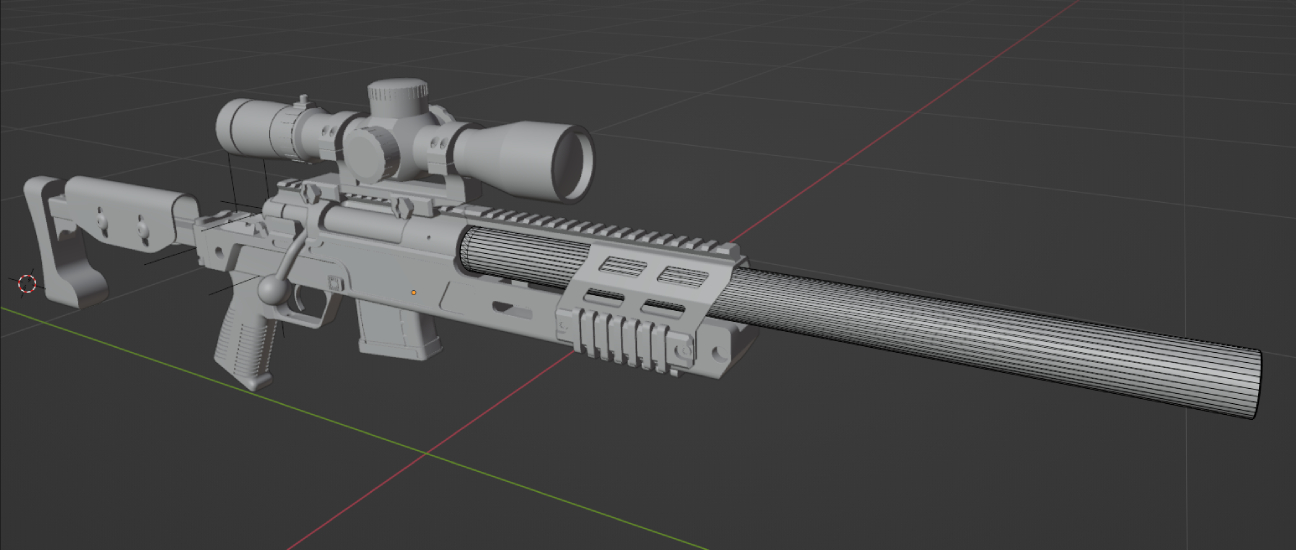
3D Modelling refers to converting the 2D concept art into a three-dimensional digital model. It involves many steps that are as follows:
- Base Creation
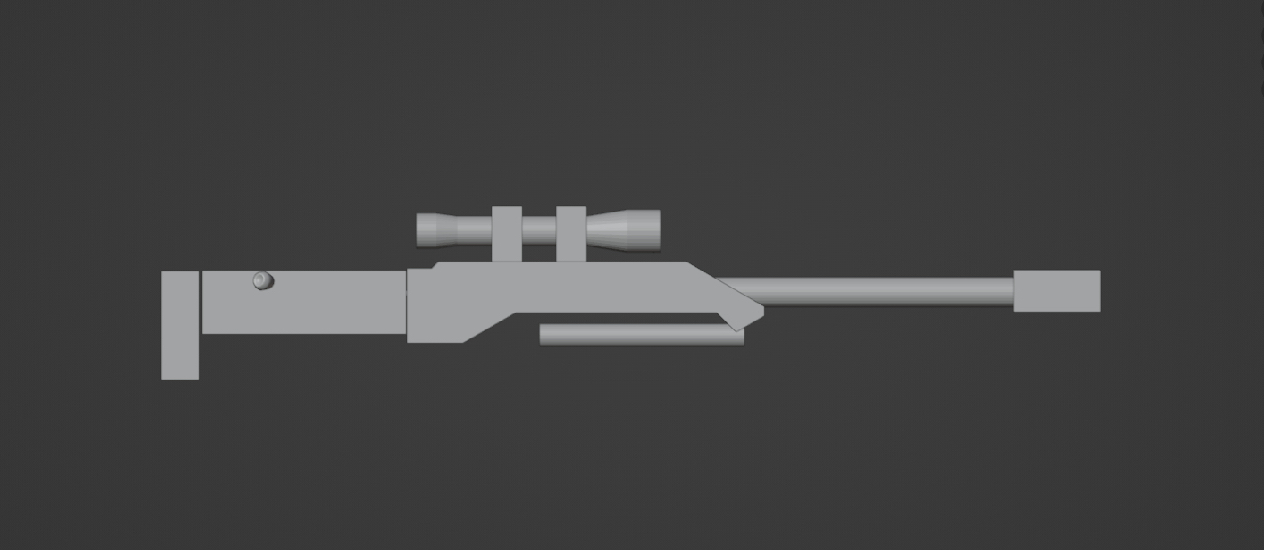
You can begin this process by blocking initial parts or a basic geometric shape representing the weapon’s shape and form. Now, add the details to the basic blockout and develop the high-poly model.
- Sculpting
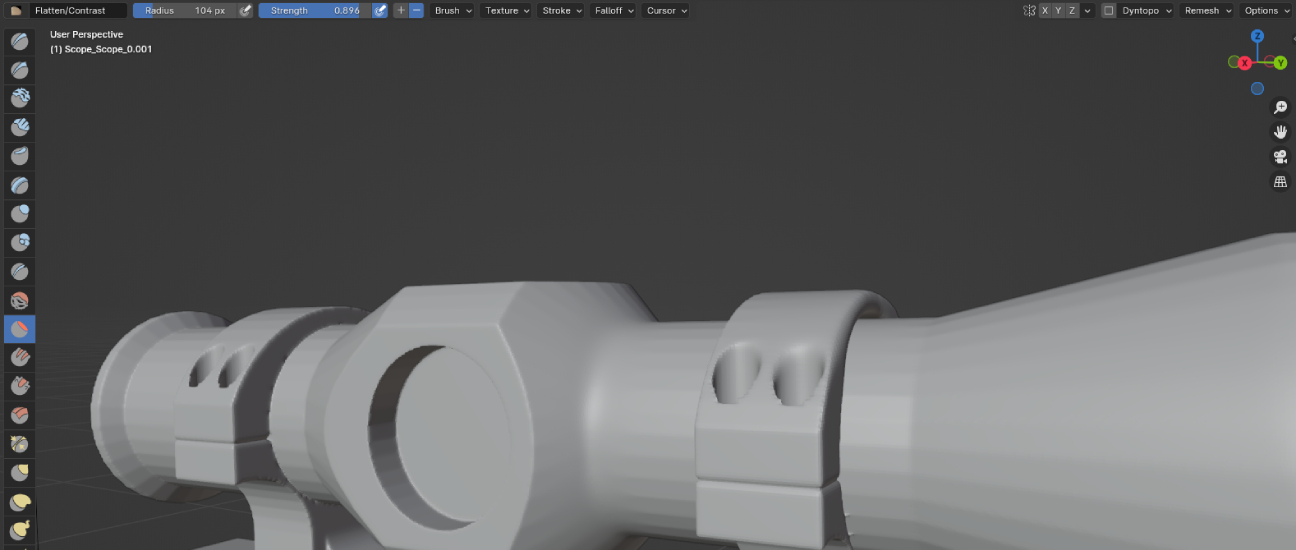
This involves sculpting intricate details, defining surfaces, and refining the overall shape to match the concept art closely.
Sculpt different parts of the weapon and elaborate engravings and inscriptions on the surface, mark runes, symbols, and texts. You can also add wear and tear, scratches, small details like bolts and joints, and weathering effects to give it a realistic appearance.
- Retopology

Convert the high-polygon model into a low-poly model by reducing the count of vertices. Work on the flow of edges while maintaining loop integrity. Along with it, distribute edge loops and quads equally.
- UV Unwrapping
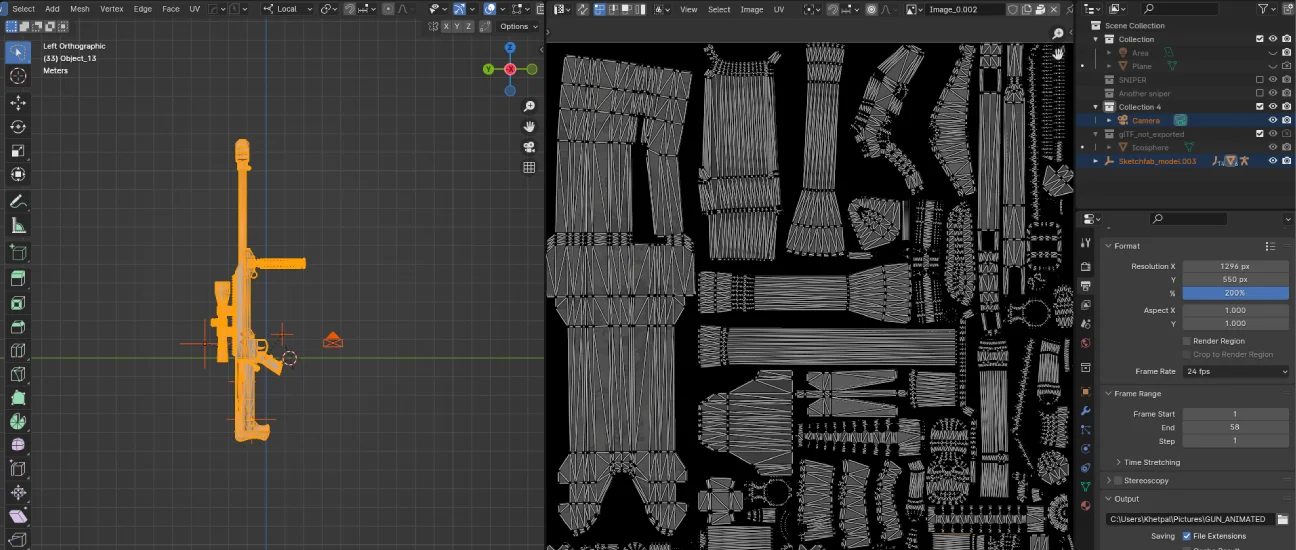
Work with UV islands that are individual pieces of the UV map corresponding and adjust the size and position of UV islands to optimize texture resolution and distribution. Larger islands generally receive more detailed textures, while smaller islands may have lower-resolution textures.
Also read: Game Environment Modeling – Unveiling Secrets to Keep Players Engaged
4. Texturing and Shading

Work on the base color, metallic and non-metallic parts, roughness, height, depth, angles, ambient occlusion, etc. Incorporate surface colors, patterns, scratches, dirt, rust, damage, and other intricate details to make the weapon look realistic or stylized. Work on shading and configure crucial parameters such as lighting, reflections, and shadows.
5. Rigging and Animation
In rigging, artists create a skeletal structure (rig) for the weapon model consisting of joints and bones that define the movement and deformation. To execute the step, artists place joints strategically within the 3D model while representing articulation points or areas where the weapon may bend or rotate. Establish a hierarchy for the joints, defining the parent-child relationships.
After completing the process, plan for the 3D animations that the weapon will perform during gameplay. Consider important factors like drawing, holstering, reloading, aiming, firing, and other special actions and animate the weapon using keyframes.
6. Sound Design Implementation
Align audio cues like weapon firing, reloading, holstering, and other interactions with the weapon’s animations and gameplay mechanics after considering factors like distance, environment, use cases, and auditory experience.
7. Balancing and Playtesting
Designers assess significant factors like damage output, attack range, accuracy, and special abilities to ensure the weapon offers a balanced and satisfactory gameplay experience. Developers also analyze how weapons perform in diverse situations and against various enemies.
Also read: The Ultimate Game Character Design Guide: From Ideation to Creation
Positive Impacts of Using Video Game Weapons and Equipment on Gameplay Mechanics
The integration of video game weapons and equipment can have several positive impacts on gameplay mechanics, enriching the player experience in various ways. Here are some of the key positive impacts:
Enhanced Immersion
Well-crafted weapons and equipment contribute to a multisensory experience, engaging players through realistic sound effects, detailed visual animations, and haptic feedback. The heightened sensory engagement deepens the connection between the player and the virtual environment.
Accurate representation of weapons and equipment, including their appearance, behavior, and functionality, adds a layer of realism to the game. This authenticity immerses players in the game, allowing them to feel as if they are part of a believable and compelling virtual world.
Strategic Depth
You may see characters using a huge variety of weapons and equipment in video games to execute various tasks. Each weapon has its unique characteristics, strengths, and weaknesses. The variety promotes experimentation and adds strategic depth to the game while helping players find the most effective tools for different situations.
Player Expression and Customization
Many games also allow players to customize their load-outs by choosing weapons and equipment that suit the character’s personality, expression, game intent, or player’s preferences. Along with it, they can choose color schemes, camouflage options, and personalize the visual appearance of their gear to express individuality and creativity.
Dynamic Environment
Video game weapons interact with the game world and influence how players navigate, strategize, and engage with their surroundings. For example, explosive weapons create craters, destroy structures, or change the landscape.
On the other hand, a tool manipulates objects in the environment, creating dynamic opportunities for both stealth and aggressive playstyles. These adjustments make the game more interesting, adding a layer of unpredictability.
Adaptability and Flexibility
Many pieces of equipment serve multiple functions. For example, a grenade might be used for offense, defense, or area denial. This versatility encourages players to adapt their use of equipment based on the evolving needs of the situation.
Story Integration
Video game weapons help with storytelling and convey information related to culture, history, environment, etc. Moreover, certain weapons act as key items and drive the story forward. For example, a legendary sword might help defeat a powerful enemy, or a rare firearm may hold the potential to unlock a mystery.
Concluding it all, the weapons and equipment you see in games aren’t just tools—they’re like characters that tell a story and make your gaming experience exciting and adventurous. However, you need to hire experienced game designers to turn simple sketches into exciting virtual adventures.

Why Choose 300Mind for Video Games Weapon Design Services?
300Mind is an eminent game development studio and a perfect choice for designing cutting-edge and immersive video game weapons. We have an experienced team of designers who are innovative and deeply entrenched in the gaming world. They have years-long experience in crafting visually stunning and functionally compelling virtual weapons. Our team has a keen understanding of the nuanced details and prowess in 3D modeling, texturing, rigging, and animation.
With their expertise, they create truly exceptional weapons that match the levels of unparalleled quality. Along with it, our commitment to collaboration and dedication also set us apart from other companies offering video game weapon design services. We adapt to evolving trends and design weapons that not only meet expectations but exceed industry standards.
